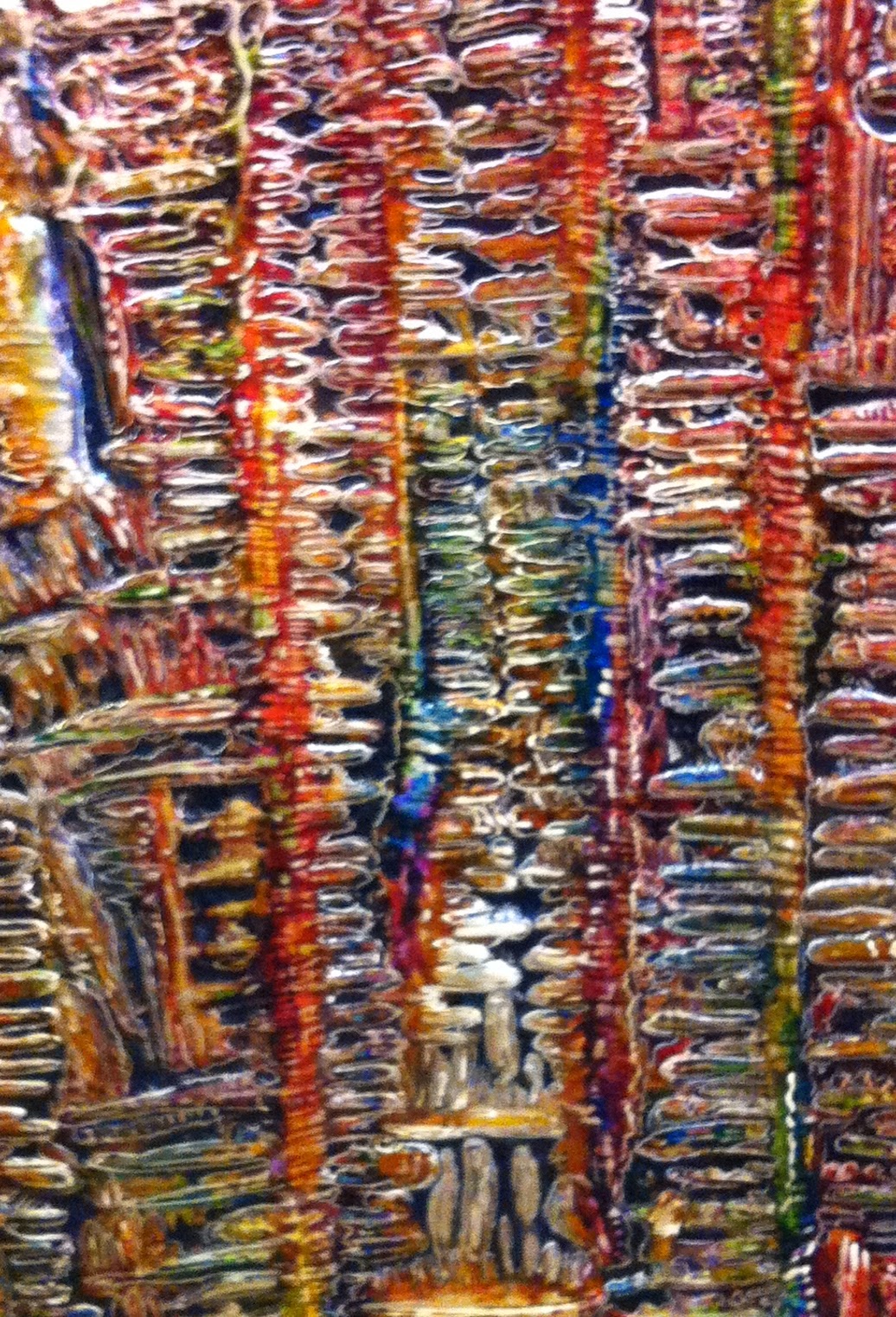 |
| Charles Leggett in the foreground Photo: Chris Bennion |
 |
| Set by Robert Dahlstrom Photo: Chris Bennion |
The title stands for the disputed antique value of some old furniture that constitutes a dead father’s estate, but the word means so much more. The cast consists of only four characters, and all have paid a painful price for the choices they’ve made, and they reveal resentments, regrets, and some secrets when, in the fall of 1967, they meet in the attic of a New York City brownstone to dispose of the furnishings left behind in this dismal place where the family had lived after the father lost everything, we are told, in the stock market crash of 1929. It’s the only set used and seems full of ghosts.
 |
| Peter Silbert as Solomon Photo: John Cornicello |
When Victor gives up hope of reaching his estranged brother, a wealthy doctor named Walter Franz (Peter Lohnes), he goes ahead with plans to sell the estate and engages the services of an elderly Jewish antique appraiser and dealer named Gregory Soloman (Peter Silbert). Victor’s wife knows that selling the furniture might mean a chance to go on a vacation or otherwise finally enjoy life a little, but she feels a moral obligation to include Walter in the decisions, even while her husband is not sure he wants to share, seeing himself as more deserving. She worries, and rightfully so, that her husband will not only cheat his brother but also fail at negotiating the deal.
Finally, something happens.
The brothers haven’t spoken in years, but just as soon as Victor agrees to sell the once elegant trappings of their early family life, at a price we’re sure is far below their value, Walter appears. And thank God for that. The introduction of the supposed villain in this good brother/bad brother tale perked up the action and interest considerably. All through the first act, my companion and I both felt ourselves drifting into unconsciousness. During a most welcome intermission in this very long play (two and a half hours) I heard comments that confirmed the same reaction in others.
 |
| Pointing back - Charles Leggett and Peter Silbert and Peter Lohnes Photo: Chris Bennion |
I’ll never forget Leggett’s performance in The Pitmen Painters, but I felt his talents were restricted by the flat personality of this dull, depressed, and burned-out cop who spoke in a monotone manner most of the time. Only in the second set do we see him really come alive. The character did not engage my interest beyond finding him pitiful for having wasted his life. He blames others for the fact that he never finished college and hides his own paralysis behind the myth of his dutiful role.
 |
| Anne Allgood as Esther Franz Photo: Chris Bennion |
Sometimes honesty is painful, especially when you write theater reviews and put forth an opinion you know may be yours alone. I won’t be gushing sweet praise for this production, even though it was visually appealing and had many fine moments. Putting it in culinary terms, rather than a delicious dessert, it’s more like an onion being peeled layer by layer until you get to the heart of it, which takes patience. Onions can make you cry, but it’s the savory qualities you remember. In the 24 hours that passed before I began writing this review, I came to appreciate The Price on a deeper level. It speaks of accountability. It makes us think about how every choice, every action, every decision, carries a price, and reminds us that the myths we hang onto from the past can smother us as the years go by, if we don’t get out from under them. Victor, especially, has a hard time with that.
 |
Peter Lohnes as Walter Franz Photo: Chris Bennion |
The truth of this play is the same truth I know about your family, and mine—that so-called reality is a matter of individual perspective. Returning to the kitchen of a long abandoned house, a person might imagine they can still smell their mother’s stew simmering on the stove, for better or worse. That might be a good memory for some, but my sister remembers hating our mother's stew, sitting in her chair and crying as it got cold and the grease congealed, until she would finally give in and “clean her plate.” Our parents were kind and good, but neither families or plays are ever perfect in everyone's eyes, and neither are reviews. Like a child leaving home, very reviewer leaves the theater with his or her own unique memory of the experience, based on what they brought to it in the first place. That brings me back to the question that hovers above the stage during this drama and above my laptop as I write: What actually IS the truth, if we all have our own interpretation?
I can recommend The Price, but like a stew, it takes a long time to cook and will taste better the next day.
Please visit and "like" Good Life Northwest blog's Facebook page. Thanks!










